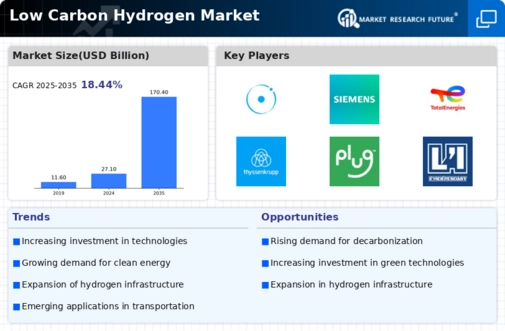-
EXECUTIVE SUMMARY
-
1.1.
-
Market Overview
-
Key Findings
-
Market Segmentation
-
1.4.
-
Competitive Landscape
-
Challenges and Opportunities
-
Future
-
Outlook
-
\r\n
-
MARKET INTRODUCTION
-
Definition
- Research Objective
- Assumption
-
2.2.
-
Scope of the study
-
2.2.3.
-
Limitations
-
RESEARCH METHODOLOGY
-
Overview
-
Data
-
Mining
-
Secondary Research
-
Primary Research
- Primary
- Breakdown of Primary Respondents
-
Interviews and Information Gathering Process
-
Forecasting Model
-
Market Size Estimation
- Bottom-Up
- Top-Down Approach
-
Approach
-
Data Triangulation
-
3.8.
-
Validation
-
MARKET DYNAMICS
-
Overview
-
Drivers
-
Restraints
-
Opportunities
-
MARKET FACTOR ANALYSIS
-
Value chain Analysis
-
Porter's Five Forces Analysis
- Bargaining Power of Buyers
- Threat of Substitutes
- Intensity
-
5.2.1.
-
Bargaining Power of Suppliers
-
5.2.3.
-
Threat of New Entrants
-
of Rivalry
-
COVID-19 Impact Analysis
- Market Impact Analysis
- Regional Impact
- Opportunity and Threat Analysis
-
LOW CARBON HYDROGEN MARKET, BY PROCESS (USD BILLION)
-
Steam Methane
-
Reforming (SMR)
-
Autothermal Reforming
-
Biomass Reforming
-
Electrolysis
-
Photo Electric Chemical (PEC) Water Splitting
-
Thermochemical Water Splitting
-
Biomass Gasification
-
6.8.
-
Coal Gasification
-
Methane Pyrolysis
-
LOW CARBON HYDROGEN
-
MARKET, BY ENERGY SOURCE (USD BILLION)
-
Natural Gas
-
Solar
-
Wind
-
Hybrid
-
Biomass
-
Geothermal
-
7.7.
-
Hydro Energy
-
Tidal
-
LOW CARBON HYDROGEN MARKET, BY END-PRODUCT
-
(USD BILLION)
-
Hydrogen
-
Ammonia
-
Liquified Hydrogen
-
Methane
-
Methanol
-
LOW CARBON HYDROGEN MARKET,
-
BY REGIONAL (USD BILLION)
-
North America
- US
-
9.1.2.
-
Canada
-
Europe
- Germany
- UK
- France
- Russia
- Italy
- Spain
- Rest of Europe
-
APAC
- China
- India
- Japan
- Malaysia
- Thailand
- Indonesia
- Rest of APAC
-
9.3.4.
-
South Korea
-
South America
- Brazil
- Argentina
- Rest of South America
-
9.4.2.
-
Mexico
-
MEA
- GCC Countries
- South Africa
- Rest of MEA
-
\r\n10.
-
COMPETITIVE LANDSCAPE
-
Overview
-
Competitive Analysis
-
Market share Analysis
-
Major Growth Strategy in the Low Carbon
-
Hydrogen Market
-
Competitive Benchmarking
-
Leading Players
- New Product Launch/Service
- Merger & Acquisitions
- Joint Ventures
-
in Terms of Number of Developments in the Low Carbon Hydrogen Market
-
10.7.
-
Key developments and growth strategies
-
Deployment
-
Major Players Financial Matrix
- Sales and Operating Income
- Major Players R&D Expenditure. 2023
-
COMPANY PROFILES
-
ITM Power
- Financial Overview
- Products Offered
- Key Developments
- SWOT Analysis
- Key Strategies
-
Siemens
- Financial Overview
- Products Offered
- Key Developments
- SWOT Analysis
- Key Strategies
-
Acwa Power
- Financial Overview
- Products Offered
- Key Developments
- SWOT Analysis
- Key Strategies
-
TotalEnergies
- Financial Overview
- Products
- Key Developments
- SWOT Analysis
-
Offered
-
11.4.5.
-
Key Strategies
-
Air Products and Chemicals
- Financial Overview
- Products Offered
- Key Developments
- SWOT
- Key Strategies
-
Analysis
-
Thyssenkrupp
- Financial
- Products Offered
- Key Developments
- Key Strategies
-
Overview
-
11.6.4.
-
SWOT Analysis
-
Plug Power
- Products Offered
- Key Developments
- SWOT Analysis
- Key Strategies
-
11.7.1.
-
Financial Overview
-
Linde
- Products Offered
- Key Developments
- SWOT Analysis
- Key Strategies
-
11.8.1.
-
Financial Overview
-
Nel Asa
- Financial Overview
- Products Offered
- Key Developments
- SWOT Analysis
- Key Strategies
-
Engie
- Financial Overview
- Products Offered
- Key
- SWOT Analysis
- Key Strategies
- Financial Overview
- Products Offered
- Key Developments
- SWOT Analysis
- Key
-
Developments
-
11.11.
-
Element Energy
-
Strategies
-
Shell
- Financial Overview
- Products
- Key Developments
- SWOT Analysis
-
Offered
-
11.12.5.
-
Key Strategies
-
BP
- Financial Overview
- Key Developments
- SWOT Analysis
- Key Strategies
-
11.13.2.
-
Products Offered
-
Hydrogenics
- Financial Overview
- Products Offered
- Key Developments
- SWOT
- Key Strategies
-
Analysis
-
Chart Industries
- Products Offered
- Key Developments
- SWOT Analysis
- Key Strategies
-
11.15.1.
-
Financial Overview
-
APPENDIX
-
References
-
Related Reports
-
LIST OF TABLES
-
\r\nTABLE
-
LIST OF ASSUMPTIONS
-
NORTH AMERICA LOW CARBON HYDROGEN MARKET SIZE
-
ESTIMATES & FORECAST, BY PROCESS, 2019-2035 (USD BILLIONS)
-
NORTH
-
AMERICA LOW CARBON HYDROGEN MARKET SIZE ESTIMATES & FORECAST, BY ENERGY SOURCE,
-
NORTH AMERICA LOW CARBON HYDROGEN MARKET
-
SIZE ESTIMATES & FORECAST, BY END-PRODUCT, 2019-2035 (USD BILLIONS)
-
TABLE
-
NORTH AMERICA LOW CARBON HYDROGEN MARKET SIZE ESTIMATES & FORECAST, BY REGIONAL,
-
US LOW CARBON HYDROGEN MARKET SIZE ESTIMATES
-
& FORECAST, BY PROCESS, 2019-2035 (USD BILLIONS)
-
US LOW CARBON
-
HYDROGEN MARKET SIZE ESTIMATES & FORECAST, BY ENERGY SOURCE, 2019-2035 (USD
-
BILLIONS)
-
US LOW CARBON HYDROGEN MARKET SIZE ESTIMATES & FORECAST,
-
BY END-PRODUCT, 2019-2035 (USD BILLIONS)
-
US LOW CARBON HYDROGEN MARKET
-
SIZE ESTIMATES & FORECAST, BY REGIONAL, 2019-2035 (USD BILLIONS)
-
TABLE
-
CANADA LOW CARBON HYDROGEN MARKET SIZE ESTIMATES & FORECAST, BY PROCESS,
-
CANADA LOW CARBON HYDROGEN MARKET SIZE
-
ESTIMATES & FORECAST, BY ENERGY SOURCE, 2019-2035 (USD BILLIONS)
-
TABLE
-
CANADA LOW CARBON HYDROGEN MARKET SIZE ESTIMATES & FORECAST, BY END-PRODUCT,
-
CANADA LOW CARBON HYDROGEN MARKET SIZE
-
ESTIMATES & FORECAST, BY REGIONAL, 2019-2035 (USD BILLIONS)
-
TABLE 14.
-
EUROPE LOW CARBON HYDROGEN MARKET SIZE ESTIMATES & FORECAST, BY PROCESS, 2019-2035
-
(USD BILLIONS)
-
EUROPE LOW CARBON HYDROGEN MARKET SIZE ESTIMATES
-
& FORECAST, BY ENERGY SOURCE, 2019-2035 (USD BILLIONS)
-
EUROPE
-
LOW CARBON HYDROGEN MARKET SIZE ESTIMATES & FORECAST, BY END-PRODUCT, 2019-2035
-
(USD BILLIONS)
-
EUROPE LOW CARBON HYDROGEN MARKET SIZE ESTIMATES
-
& FORECAST, BY REGIONAL, 2019-2035 (USD BILLIONS)
-
GERMANY LOW
-
CARBON HYDROGEN MARKET SIZE ESTIMATES & FORECAST, BY PROCESS, 2019-2035 (USD
-
BILLIONS)
-
GERMANY LOW CARBON HYDROGEN MARKET SIZE ESTIMATES &
-
FORECAST, BY ENERGY SOURCE, 2019-2035 (USD BILLIONS)
-
GERMANY LOW
-
CARBON HYDROGEN MARKET SIZE ESTIMATES & FORECAST, BY END-PRODUCT, 2019-2035
-
(USD BILLIONS)
-
GERMANY LOW CARBON HYDROGEN MARKET SIZE ESTIMATES
-
& FORECAST, BY REGIONAL, 2019-2035 (USD BILLIONS)
-
UK LOW CARBON
-
HYDROGEN MARKET SIZE ESTIMATES & FORECAST, BY PROCESS, 2019-2035 (USD BILLIONS)
-
UK LOW CARBON HYDROGEN MARKET SIZE ESTIMATES & FORECAST, BY
-
ENERGY SOURCE, 2019-2035 (USD BILLIONS)
-
UK LOW CARBON HYDROGEN MARKET
-
SIZE ESTIMATES & FORECAST, BY END-PRODUCT, 2019-2035 (USD BILLIONS)
-
TABLE
-
UK LOW CARBON HYDROGEN MARKET SIZE ESTIMATES & FORECAST, BY REGIONAL, 2019-2035
-
(USD BILLIONS)
-
FRANCE LOW CARBON HYDROGEN MARKET SIZE ESTIMATES
-
& FORECAST, BY PROCESS, 2019-2035 (USD BILLIONS)
-
FRANCE LOW
-
CARBON HYDROGEN MARKET SIZE ESTIMATES & FORECAST, BY ENERGY SOURCE, 2019-2035
-
(USD BILLIONS)
-
FRANCE LOW CARBON HYDROGEN MARKET SIZE ESTIMATES
-
& FORECAST, BY END-PRODUCT, 2019-2035 (USD BILLIONS)
-
FRANCE
-
LOW CARBON HYDROGEN MARKET SIZE ESTIMATES & FORECAST, BY REGIONAL, 2019-2035
-
(USD BILLIONS)
-
RUSSIA LOW CARBON HYDROGEN MARKET SIZE ESTIMATES
-
& FORECAST, BY PROCESS, 2019-2035 (USD BILLIONS)
-
RUSSIA LOW
-
CARBON HYDROGEN MARKET SIZE ESTIMATES & FORECAST, BY ENERGY SOURCE, 2019-2035
-
(USD BILLIONS)
-
RUSSIA LOW CARBON HYDROGEN MARKET SIZE ESTIMATES
-
& FORECAST, BY END-PRODUCT, 2019-2035 (USD BILLIONS)
-
RUSSIA
-
LOW CARBON HYDROGEN MARKET SIZE ESTIMATES & FORECAST, BY REGIONAL, 2019-2035
-
(USD BILLIONS)
-
ITALY LOW CARBON HYDROGEN MARKET SIZE ESTIMATES &
-
FORECAST, BY PROCESS, 2019-2035 (USD BILLIONS)
-
ITALY LOW CARBON
-
HYDROGEN MARKET SIZE ESTIMATES & FORECAST, BY ENERGY SOURCE, 2019-2035 (USD
-
BILLIONS)
-
ITALY LOW CARBON HYDROGEN MARKET SIZE ESTIMATES &
-
FORECAST, BY END-PRODUCT, 2019-2035 (USD BILLIONS)
-
ITALY LOW CARBON
-
HYDROGEN MARKET SIZE ESTIMATES & FORECAST, BY REGIONAL, 2019-2035 (USD BILLIONS)
-
SPAIN LOW CARBON HYDROGEN MARKET SIZE ESTIMATES & FORECAST,
-
BY PROCESS, 2019-2035 (USD BILLIONS)
-
SPAIN LOW CARBON HYDROGEN MARKET
-
SIZE ESTIMATES & FORECAST, BY ENERGY SOURCE, 2019-2035 (USD BILLIONS)
-
TABLE
-
SPAIN LOW CARBON HYDROGEN MARKET SIZE ESTIMATES & FORECAST, BY END-PRODUCT,
-
SPAIN LOW CARBON HYDROGEN MARKET SIZE ESTIMATES
-
& FORECAST, BY REGIONAL, 2019-2035 (USD BILLIONS)
-
REST OF EUROPE
-
LOW CARBON HYDROGEN MARKET SIZE ESTIMATES & FORECAST, BY PROCESS, 2019-2035
-
(USD BILLIONS)
-
REST OF EUROPE LOW CARBON HYDROGEN MARKET SIZE ESTIMATES
-
& FORECAST, BY ENERGY SOURCE, 2019-2035 (USD BILLIONS)
-
REST
-
OF EUROPE LOW CARBON HYDROGEN MARKET SIZE ESTIMATES & FORECAST, BY END-PRODUCT,
-
REST OF EUROPE LOW CARBON HYDROGEN MARKET
-
SIZE ESTIMATES & FORECAST, BY REGIONAL, 2019-2035 (USD BILLIONS)
-
TABLE
-
APAC LOW CARBON HYDROGEN MARKET SIZE ESTIMATES & FORECAST, BY PROCESS, 2019-2035
-
(USD BILLIONS)
-
APAC LOW CARBON HYDROGEN MARKET SIZE ESTIMATES &
-
FORECAST, BY ENERGY SOURCE, 2019-2035 (USD BILLIONS)
-
APAC LOW CARBON
-
HYDROGEN MARKET SIZE ESTIMATES & FORECAST, BY END-PRODUCT, 2019-2035 (USD BILLIONS)
-
APAC LOW CARBON HYDROGEN MARKET SIZE ESTIMATES & FORECAST, BY
-
REGIONAL, 2019-2035 (USD BILLIONS)
-
CHINA LOW CARBON HYDROGEN MARKET
-
SIZE ESTIMATES & FORECAST, BY PROCESS, 2019-2035 (USD BILLIONS)
-
TABLE
-
CHINA LOW CARBON HYDROGEN MARKET SIZE ESTIMATES & FORECAST, BY ENERGY SOURCE,
-
CHINA LOW CARBON HYDROGEN MARKET SIZE ESTIMATES
-
& FORECAST, BY END-PRODUCT, 2019-2035 (USD BILLIONS)
-
CHINA LOW
-
CARBON HYDROGEN MARKET SIZE ESTIMATES & FORECAST, BY REGIONAL, 2019-2035 (USD
-
BILLIONS)
-
INDIA LOW CARBON HYDROGEN MARKET SIZE ESTIMATES &
-
FORECAST, BY PROCESS, 2019-2035 (USD BILLIONS)
-
INDIA LOW CARBON
-
HYDROGEN MARKET SIZE ESTIMATES & FORECAST, BY ENERGY SOURCE, 2019-2035 (USD
-
BILLIONS)
-
INDIA LOW CARBON HYDROGEN MARKET SIZE ESTIMATES &
-
FORECAST, BY END-PRODUCT, 2019-2035 (USD BILLIONS)
-
INDIA LOW CARBON
-
HYDROGEN MARKET SIZE ESTIMATES & FORECAST, BY REGIONAL, 2019-2035 (USD BILLIONS)
-
JAPAN LOW CARBON HYDROGEN MARKET SIZE ESTIMATES & FORECAST,
-
BY PROCESS, 2019-2035 (USD BILLIONS)
-
JAPAN LOW CARBON HYDROGEN MARKET
-
SIZE ESTIMATES & FORECAST, BY ENERGY SOURCE, 2019-2035 (USD BILLIONS)
-
TABLE
-
JAPAN LOW CARBON HYDROGEN MARKET SIZE ESTIMATES & FORECAST, BY END-PRODUCT,
-
JAPAN LOW CARBON HYDROGEN MARKET SIZE ESTIMATES
-
& FORECAST, BY REGIONAL, 2019-2035 (USD BILLIONS)
-
SOUTH KOREA
-
LOW CARBON HYDROGEN MARKET SIZE ESTIMATES & FORECAST, BY PROCESS, 2019-2035
-
(USD BILLIONS)
-
SOUTH KOREA LOW CARBON HYDROGEN MARKET SIZE ESTIMATES
-
& FORECAST, BY ENERGY SOURCE, 2019-2035 (USD BILLIONS)
-
SOUTH
-
KOREA LOW CARBON HYDROGEN MARKET SIZE ESTIMATES & FORECAST, BY END-PRODUCT,
-
SOUTH KOREA LOW CARBON HYDROGEN MARKET
-
SIZE ESTIMATES & FORECAST, BY REGIONAL, 2019-2035 (USD BILLIONS)
-
TABLE
-
MALAYSIA LOW CARBON HYDROGEN MARKET SIZE ESTIMATES & FORECAST, BY PROCESS,
-
MALAYSIA LOW CARBON HYDROGEN MARKET SIZE
-
ESTIMATES & FORECAST, BY ENERGY SOURCE, 2019-2035 (USD BILLIONS)
-
TABLE
-
MALAYSIA LOW CARBON HYDROGEN MARKET SIZE ESTIMATES & FORECAST, BY END-PRODUCT,
-
MALAYSIA LOW CARBON HYDROGEN MARKET SIZE
-
ESTIMATES & FORECAST, BY REGIONAL, 2019-2035 (USD BILLIONS)
-
TABLE 70.
-
THAILAND LOW CARBON HYDROGEN MARKET SIZE ESTIMATES & FORECAST, BY PROCESS, 2019-2035
-
(USD BILLIONS)
-
THAILAND LOW CARBON HYDROGEN MARKET SIZE ESTIMATES
-
& FORECAST, BY ENERGY SOURCE, 2019-2035 (USD BILLIONS)
-
THAILAND
-
LOW CARBON HYDROGEN MARKET SIZE ESTIMATES & FORECAST, BY END-PRODUCT, 2019-2035
-
(USD BILLIONS)
-
THAILAND LOW CARBON HYDROGEN MARKET SIZE ESTIMATES
-
& FORECAST, BY REGIONAL, 2019-2035 (USD BILLIONS)
-
INDONESIA
-
LOW CARBON HYDROGEN MARKET SIZE ESTIMATES & FORECAST, BY PROCESS, 2019-2035
-
(USD BILLIONS)
-
INDONESIA LOW CARBON HYDROGEN MARKET SIZE ESTIMATES
-
& FORECAST, BY ENERGY SOURCE, 2019-2035 (USD BILLIONS)
-
INDONESIA
-
LOW CARBON HYDROGEN MARKET SIZE ESTIMATES & FORECAST, BY END-PRODUCT, 2019-2035
-
(USD BILLIONS)
-
INDONESIA LOW CARBON HYDROGEN MARKET SIZE ESTIMATES
-
& FORECAST, BY REGIONAL, 2019-2035 (USD BILLIONS)
-
REST OF APAC
-
LOW CARBON HYDROGEN MARKET SIZE ESTIMATES & FORECAST, BY PROCESS, 2019-2035
-
(USD BILLIONS)
-
REST OF APAC LOW CARBON HYDROGEN MARKET SIZE ESTIMATES
-
& FORECAST, BY ENERGY SOURCE, 2019-2035 (USD BILLIONS)
-
REST
-
OF APAC LOW CARBON HYDROGEN MARKET SIZE ESTIMATES & FORECAST, BY END-PRODUCT,
-
REST OF APAC LOW CARBON HYDROGEN MARKET
-
SIZE ESTIMATES & FORECAST, BY REGIONAL, 2019-2035 (USD BILLIONS)
-
TABLE
-
SOUTH AMERICA LOW CARBON HYDROGEN MARKET SIZE ESTIMATES & FORECAST, BY PROCESS,
-
SOUTH AMERICA LOW CARBON HYDROGEN MARKET
-
SIZE ESTIMATES & FORECAST, BY ENERGY SOURCE, 2019-2035 (USD BILLIONS)
-
TABLE
-
SOUTH AMERICA LOW CARBON HYDROGEN MARKET SIZE ESTIMATES & FORECAST, BY END-PRODUCT,
-
SOUTH AMERICA LOW CARBON HYDROGEN MARKET
-
SIZE ESTIMATES & FORECAST, BY REGIONAL, 2019-2035 (USD BILLIONS)
-
TABLE
-
BRAZIL LOW CARBON HYDROGEN MARKET SIZE ESTIMATES & FORECAST, BY PROCESS,
-
BRAZIL LOW CARBON HYDROGEN MARKET SIZE
-
ESTIMATES & FORECAST, BY ENERGY SOURCE, 2019-2035 (USD BILLIONS)
-
TABLE
-
BRAZIL LOW CARBON HYDROGEN MARKET SIZE ESTIMATES & FORECAST, BY END-PRODUCT,
-
BRAZIL LOW CARBON HYDROGEN MARKET SIZE
-
ESTIMATES & FORECAST, BY REGIONAL, 2019-2035 (USD BILLIONS)
-
TABLE 90.
-
MEXICO LOW CARBON HYDROGEN MARKET SIZE ESTIMATES & FORECAST, BY PROCESS, 2019-2035
-
(USD BILLIONS)
-
MEXICO LOW CARBON HYDROGEN MARKET SIZE ESTIMATES
-
& FORECAST, BY ENERGY SOURCE, 2019-2035 (USD BILLIONS)
-
MEXICO
-
LOW CARBON HYDROGEN MARKET SIZE ESTIMATES & FORECAST, BY END-PRODUCT, 2019-2035
-
(USD BILLIONS)
-
MEXICO LOW CARBON HYDROGEN MARKET SIZE ESTIMATES
-
& FORECAST, BY REGIONAL, 2019-2035 (USD BILLIONS)
-
ARGENTINA
-
LOW CARBON HYDROGEN MARKET SIZE ESTIMATES & FORECAST, BY PROCESS, 2019-2035
-
(USD BILLIONS)
-
ARGENTINA LOW CARBON HYDROGEN MARKET SIZE ESTIMATES
-
& FORECAST, BY ENERGY SOURCE, 2019-2035 (USD BILLIONS)
-
ARGENTINA
-
LOW CARBON HYDROGEN MARKET SIZE ESTIMATES & FORECAST, BY END-PRODUCT, 2019-2035
-
(USD BILLIONS)
-
ARGENTINA LOW CARBON HYDROGEN MARKET SIZE ESTIMATES
-
& FORECAST, BY REGIONAL, 2019-2035 (USD BILLIONS)
-
REST OF SOUTH
-
AMERICA LOW CARBON HYDROGEN MARKET SIZE ESTIMATES & FORECAST, BY PROCESS, 2019-2035
-
(USD BILLIONS)
-
REST OF SOUTH AMERICA LOW CARBON HYDROGEN MARKET
-
SIZE ESTIMATES & FORECAST, BY ENERGY SOURCE, 2019-2035 (USD BILLIONS)
-
TABLE
-
REST OF SOUTH AMERICA LOW CARBON HYDROGEN MARKET SIZE ESTIMATES & FORECAST,
-
BY END-PRODUCT, 2019-2035 (USD BILLIONS)
-
REST OF SOUTH AMERICA
-
LOW CARBON HYDROGEN MARKET SIZE ESTIMATES & FORECAST, BY REGIONAL, 2019-2035
-
(USD BILLIONS)
-
MEA LOW CARBON HYDROGEN MARKET SIZE ESTIMATES &
-
FORECAST, BY PROCESS, 2019-2035 (USD BILLIONS)
-
MEA LOW CARBON HYDROGEN
-
MARKET SIZE ESTIMATES & FORECAST, BY ENERGY SOURCE, 2019-2035 (USD BILLIONS)
-
MEA LOW CARBON HYDROGEN MARKET SIZE ESTIMATES & FORECAST, BY
-
END-PRODUCT, 2019-2035 (USD BILLIONS)
-
MEA LOW CARBON HYDROGEN MARKET
-
SIZE ESTIMATES & FORECAST, BY REGIONAL, 2019-2035 (USD BILLIONS)
-
TABLE
-
GCC COUNTRIES LOW CARBON HYDROGEN MARKET SIZE ESTIMATES & FORECAST, BY
-
PROCESS, 2019-2035 (USD BILLIONS)
-
GCC COUNTRIES LOW CARBON HYDROGEN
-
MARKET SIZE ESTIMATES & FORECAST, BY ENERGY SOURCE, 2019-2035 (USD BILLIONS)
-
GCC COUNTRIES LOW CARBON HYDROGEN MARKET SIZE ESTIMATES & FORECAST,
-
BY END-PRODUCT, 2019-2035 (USD BILLIONS)
-
GCC COUNTRIES LOW CARBON
-
HYDROGEN MARKET SIZE ESTIMATES & FORECAST, BY REGIONAL, 2019-2035 (USD BILLIONS)
-
SOUTH AFRICA LOW CARBON HYDROGEN MARKET SIZE ESTIMATES & FORECAST,
-
BY PROCESS, 2019-2035 (USD BILLIONS)
-
SOUTH AFRICA LOW CARBON HYDROGEN
-
MARKET SIZE ESTIMATES & FORECAST, BY ENERGY SOURCE, 2019-2035 (USD BILLIONS)
-
SOUTH AFRICA LOW CARBON HYDROGEN MARKET SIZE ESTIMATES & FORECAST,
-
BY END-PRODUCT, 2019-2035 (USD BILLIONS)
-
SOUTH AFRICA LOW CARBON
-
HYDROGEN MARKET SIZE ESTIMATES & FORECAST, BY REGIONAL, 2019-2035 (USD BILLIONS)
-
REST OF MEA LOW CARBON HYDROGEN MARKET SIZE ESTIMATES & FORECAST,
-
BY PROCESS, 2019-2035 (USD BILLIONS)
-
REST OF MEA LOW CARBON HYDROGEN
-
MARKET SIZE ESTIMATES & FORECAST, BY ENERGY SOURCE, 2019-2035 (USD BILLIONS)
-
REST OF MEA LOW CARBON HYDROGEN MARKET SIZE ESTIMATES & FORECAST,
-
BY END-PRODUCT, 2019-2035 (USD BILLIONS)
-
REST OF MEA LOW CARBON
-
HYDROGEN MARKET SIZE ESTIMATES & FORECAST, BY REGIONAL, 2019-2035 (USD BILLIONS)
-
PRODUCT LAUNCH/PRODUCT DEVELOPMENT/APPROVAL
-
ACQUISITION/PARTNERSHIP
-
\r\nLIST
-
OF FIGURES
-
\r\nFIGURE 1. MARKET SYNOPSIS
-
NORTH AMERICA LOW
-
CARBON HYDROGEN MARKET ANALYSIS
-
US LOW CARBON HYDROGEN MARKET ANALYSIS
-
BY PROCESS
-
US LOW CARBON HYDROGEN MARKET ANALYSIS BY ENERGY SOURCE
-
US LOW CARBON HYDROGEN MARKET ANALYSIS BY END-PRODUCT
-
FIGURE
-
US LOW CARBON HYDROGEN MARKET ANALYSIS BY REGIONAL
-
CANADA LOW
-
CARBON HYDROGEN MARKET ANALYSIS BY PROCESS
-
CANADA LOW CARBON HYDROGEN
-
MARKET ANALYSIS BY ENERGY SOURCE
-
CANADA LOW CARBON HYDROGEN MARKET
-
ANALYSIS BY END-PRODUCT
-
CANADA LOW CARBON HYDROGEN MARKET ANALYSIS
-
BY REGIONAL
-
EUROPE LOW CARBON HYDROGEN MARKET ANALYSIS
-
FIGURE
-
GERMANY LOW CARBON HYDROGEN MARKET ANALYSIS BY PROCESS
-
GERMANY
-
LOW CARBON HYDROGEN MARKET ANALYSIS BY ENERGY SOURCE
-
GERMANY LOW
-
CARBON HYDROGEN MARKET ANALYSIS BY END-PRODUCT
-
GERMANY LOW CARBON
-
HYDROGEN MARKET ANALYSIS BY REGIONAL
-
UK LOW CARBON HYDROGEN MARKET
-
ANALYSIS BY PROCESS
-
UK LOW CARBON HYDROGEN MARKET ANALYSIS BY ENERGY
-
SOURCE
-
UK LOW CARBON HYDROGEN MARKET ANALYSIS BY END-PRODUCT
-
UK LOW CARBON HYDROGEN MARKET ANALYSIS BY REGIONAL
-
FIGURE 20.
-
FRANCE LOW CARBON HYDROGEN MARKET ANALYSIS BY PROCESS
-
FRANCE LOW
-
CARBON HYDROGEN MARKET ANALYSIS BY ENERGY SOURCE
-
FRANCE LOW CARBON
-
HYDROGEN MARKET ANALYSIS BY END-PRODUCT
-
FRANCE LOW CARBON HYDROGEN
-
MARKET ANALYSIS BY REGIONAL
-
RUSSIA LOW CARBON HYDROGEN MARKET ANALYSIS
-
BY PROCESS
-
RUSSIA LOW CARBON HYDROGEN MARKET ANALYSIS BY ENERGY
-
SOURCE
-
RUSSIA LOW CARBON HYDROGEN MARKET ANALYSIS BY END-PRODUCT
-
RUSSIA LOW CARBON HYDROGEN MARKET ANALYSIS BY REGIONAL
-
FIGURE
-
ITALY LOW CARBON HYDROGEN MARKET ANALYSIS BY PROCESS
-
ITALY
-
LOW CARBON HYDROGEN MARKET ANALYSIS BY ENERGY SOURCE
-
ITALY LOW
-
CARBON HYDROGEN MARKET ANALYSIS BY END-PRODUCT
-
ITALY LOW CARBON
-
HYDROGEN MARKET ANALYSIS BY REGIONAL
-
SPAIN LOW CARBON HYDROGEN
-
MARKET ANALYSIS BY PROCESS
-
SPAIN LOW CARBON HYDROGEN MARKET ANALYSIS
-
BY ENERGY SOURCE
-
SPAIN LOW CARBON HYDROGEN MARKET ANALYSIS BY END-PRODUCT
-
SPAIN LOW CARBON HYDROGEN MARKET ANALYSIS BY REGIONAL
-
FIGURE
-
REST OF EUROPE LOW CARBON HYDROGEN MARKET ANALYSIS BY PROCESS
-
FIGURE 37.
-
REST OF EUROPE LOW CARBON HYDROGEN MARKET ANALYSIS BY ENERGY SOURCE
-
FIGURE
-
REST OF EUROPE LOW CARBON HYDROGEN MARKET ANALYSIS BY END-PRODUCT
-
FIGURE
-
REST OF EUROPE LOW CARBON HYDROGEN MARKET ANALYSIS BY REGIONAL
-
FIGURE
-
APAC LOW CARBON HYDROGEN MARKET ANALYSIS
-
CHINA LOW CARBON HYDROGEN
-
MARKET ANALYSIS BY PROCESS
-
CHINA LOW CARBON HYDROGEN MARKET ANALYSIS
-
BY ENERGY SOURCE
-
CHINA LOW CARBON HYDROGEN MARKET ANALYSIS BY END-PRODUCT
-
CHINA LOW CARBON HYDROGEN MARKET ANALYSIS BY REGIONAL
-
FIGURE
-
INDIA LOW CARBON HYDROGEN MARKET ANALYSIS BY PROCESS
-
INDIA
-
LOW CARBON HYDROGEN MARKET ANALYSIS BY ENERGY SOURCE
-
INDIA LOW
-
CARBON HYDROGEN MARKET ANALYSIS BY END-PRODUCT
-
INDIA LOW CARBON
-
HYDROGEN MARKET ANALYSIS BY REGIONAL
-
JAPAN LOW CARBON HYDROGEN
-
MARKET ANALYSIS BY PROCESS
-
JAPAN LOW CARBON HYDROGEN MARKET ANALYSIS
-
BY ENERGY SOURCE
-
JAPAN LOW CARBON HYDROGEN MARKET ANALYSIS BY END-PRODUCT
-
JAPAN LOW CARBON HYDROGEN MARKET ANALYSIS BY REGIONAL
-
FIGURE
-
SOUTH KOREA LOW CARBON HYDROGEN MARKET ANALYSIS BY PROCESS
-
FIGURE 54.
-
SOUTH KOREA LOW CARBON HYDROGEN MARKET ANALYSIS BY ENERGY SOURCE
-
FIGURE 55.
-
SOUTH KOREA LOW CARBON HYDROGEN MARKET ANALYSIS BY END-PRODUCT
-
FIGURE 56.
-
SOUTH KOREA LOW CARBON HYDROGEN MARKET ANALYSIS BY REGIONAL
-
MALAYSIA
-
LOW CARBON HYDROGEN MARKET ANALYSIS BY PROCESS
-
MALAYSIA LOW CARBON
-
HYDROGEN MARKET ANALYSIS BY ENERGY SOURCE
-
MALAYSIA LOW CARBON HYDROGEN
-
MARKET ANALYSIS BY END-PRODUCT
-
MALAYSIA LOW CARBON HYDROGEN MARKET
-
ANALYSIS BY REGIONAL
-
THAILAND LOW CARBON HYDROGEN MARKET ANALYSIS
-
BY PROCESS
-
THAILAND LOW CARBON HYDROGEN MARKET ANALYSIS BY ENERGY
-
SOURCE
-
THAILAND LOW CARBON HYDROGEN MARKET ANALYSIS BY END-PRODUCT
-
THAILAND LOW CARBON HYDROGEN MARKET ANALYSIS BY REGIONAL
-
FIGURE
-
INDONESIA LOW CARBON HYDROGEN MARKET ANALYSIS BY PROCESS
-
INDONESIA
-
LOW CARBON HYDROGEN MARKET ANALYSIS BY ENERGY SOURCE
-
INDONESIA
-
LOW CARBON HYDROGEN MARKET ANALYSIS BY END-PRODUCT
-
INDONESIA LOW
-
CARBON HYDROGEN MARKET ANALYSIS BY REGIONAL
-
REST OF APAC LOW CARBON
-
HYDROGEN MARKET ANALYSIS BY PROCESS
-
REST OF APAC LOW CARBON HYDROGEN
-
MARKET ANALYSIS BY ENERGY SOURCE
-
REST OF APAC LOW CARBON HYDROGEN
-
MARKET ANALYSIS BY END-PRODUCT
-
REST OF APAC LOW CARBON HYDROGEN
-
MARKET ANALYSIS BY REGIONAL
-
SOUTH AMERICA LOW CARBON HYDROGEN MARKET
-
ANALYSIS
-
BRAZIL LOW CARBON HYDROGEN MARKET ANALYSIS BY PROCESS
-
BRAZIL LOW CARBON HYDROGEN MARKET ANALYSIS BY ENERGY SOURCE
-
BRAZIL LOW CARBON HYDROGEN MARKET ANALYSIS BY END-PRODUCT
-
FIGURE
-
BRAZIL LOW CARBON HYDROGEN MARKET ANALYSIS BY REGIONAL
-
MEXICO
-
LOW CARBON HYDROGEN MARKET ANALYSIS BY PROCESS
-
MEXICO LOW CARBON
-
HYDROGEN MARKET ANALYSIS BY ENERGY SOURCE
-
MEXICO LOW CARBON HYDROGEN
-
MARKET ANALYSIS BY END-PRODUCT
-
MEXICO LOW CARBON HYDROGEN MARKET
-
ANALYSIS BY REGIONAL
-
ARGENTINA LOW CARBON HYDROGEN MARKET ANALYSIS
-
BY PROCESS
-
ARGENTINA LOW CARBON HYDROGEN MARKET ANALYSIS BY ENERGY
-
SOURCE
-
ARGENTINA LOW CARBON HYDROGEN MARKET ANALYSIS BY END-PRODUCT
-
ARGENTINA LOW CARBON HYDROGEN MARKET ANALYSIS BY REGIONAL
-
FIGURE
-
REST OF SOUTH AMERICA LOW CARBON HYDROGEN MARKET ANALYSIS BY PROCESS
-
FIGURE
-
REST OF SOUTH AMERICA LOW CARBON HYDROGEN MARKET ANALYSIS BY ENERGY SOURCE
-
REST OF SOUTH AMERICA LOW CARBON HYDROGEN MARKET ANALYSIS BY END-PRODUCT
-
REST OF SOUTH AMERICA LOW CARBON HYDROGEN MARKET ANALYSIS BY REGIONAL
-
MEA LOW CARBON HYDROGEN MARKET ANALYSIS
-
GCC COUNTRIES
-
LOW CARBON HYDROGEN MARKET ANALYSIS BY PROCESS
-
GCC COUNTRIES LOW
-
CARBON HYDROGEN MARKET ANALYSIS BY ENERGY SOURCE
-
GCC COUNTRIES
-
LOW CARBON HYDROGEN MARKET ANALYSIS BY END-PRODUCT
-
GCC COUNTRIES
-
LOW CARBON HYDROGEN MARKET ANALYSIS BY REGIONAL
-
SOUTH AFRICA LOW
-
CARBON HYDROGEN MARKET ANALYSIS BY PROCESS
-
SOUTH AFRICA LOW CARBON
-
HYDROGEN MARKET ANALYSIS BY ENERGY SOURCE
-
SOUTH AFRICA LOW CARBON
-
HYDROGEN MARKET ANALYSIS BY END-PRODUCT
-
SOUTH AFRICA LOW CARBON
-
HYDROGEN MARKET ANALYSIS BY REGIONAL
-
REST OF MEA LOW CARBON HYDROGEN
-
MARKET ANALYSIS BY PROCESS
-
REST OF MEA LOW CARBON HYDROGEN MARKET
-
ANALYSIS BY ENERGY SOURCE
-
REST OF MEA LOW CARBON HYDROGEN MARKET
-
ANALYSIS BY END-PRODUCT
-
REST OF MEA LOW CARBON HYDROGEN MARKET
-
ANALYSIS BY REGIONAL
-
KEY BUYING CRITERIA OF LOW CARBON HYDROGEN
-
MARKET
-
RESEARCH PROCESS OF MRFR
-
DRO ANALYSIS
-
OF LOW CARBON HYDROGEN MARKET
-
DRIVERS IMPACT ANALYSIS: LOW CARBON
-
HYDROGEN MARKET
-
RESTRAINTS IMPACT ANALYSIS: LOW CARBON HYDROGEN
-
MARKET
-
SUPPLY / VALUE CHAIN: LOW CARBON HYDROGEN MARKET
-
FIGURE
-
LOW CARBON HYDROGEN MARKET, BY PROCESS, 2025 (% SHARE)
-
LOW
-
CARBON HYDROGEN MARKET, BY PROCESS, 2019 TO 2035 (USD Billions)
-
FIGURE 111.
-
LOW CARBON HYDROGEN MARKET, BY ENERGY SOURCE, 2025 (% SHARE)
-
LOW
-
CARBON HYDROGEN MARKET, BY ENERGY SOURCE, 2019 TO 2035 (USD Billions)
-
FIGURE
-
LOW CARBON HYDROGEN MARKET, BY END-PRODUCT, 2025 (% SHARE)
-
FIGURE 114.
-
LOW CARBON HYDROGEN MARKET, BY END-PRODUCT, 2019 TO 2035 (USD Billions)
-
FIGURE
-
LOW CARBON HYDROGEN MARKET, BY REGIONAL, 2025 (% SHARE)
-
LOW
-
CARBON HYDROGEN MARKET, BY REGIONAL, 2019 TO 2035 (USD Billions)
-
FIGURE 117.
-
BENCHMARKING OF MAJOR COMPETITORS









Leave a Comment